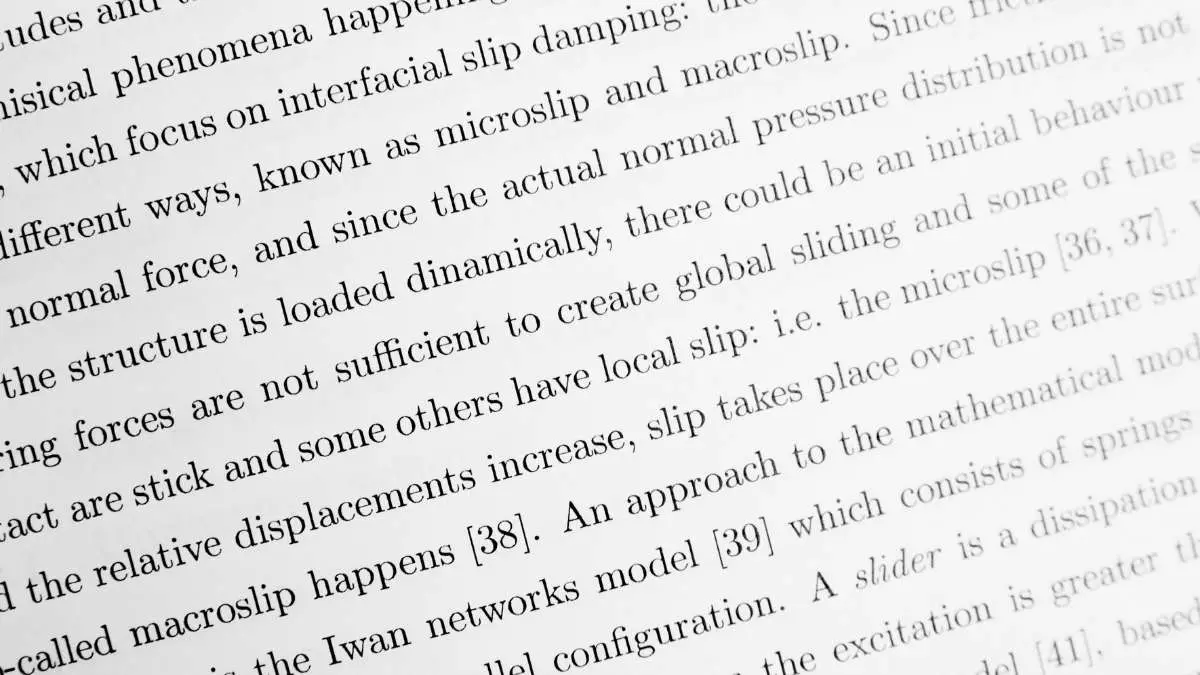Table of Contents
- Introduction
- A Year of Big Numbers: The 5.14 Million Mark
- Who’s Driving the Output?
- The Open Access Tipping Point
- AI Authorship and the Machine-Learning Manuscript
- The Rise of Hyper-Prolific Authors
- Preprints, Speed, and the Acceleration of Science
- The Business of Academic Publishing
- Citation Inflation and Metric Mayhem
- Diversity, Equity, and Inclusion in Publishing
- The Future: What Comes Next?
- Conclusion
Introduction
In 2024, the academic publishing world shattered yet another ceiling: over 5.14 million scholarly articles were published globally across various disciplines. That’s not a typo. Five million. That’s more than the number of babies born in some countries—and definitely more than the number of books most people read in a lifetime. This figure reflects not only the increasingly hyperproductive nature of global research but also a publishing ecosystem that’s becoming more accessible, competitive, and, yes, a little chaotic.
The surge in academic output isn’t just a number game. It reveals tectonic shifts in how research is conducted, disseminated, and consumed. From open access expansion to AI-powered authorship, from the dominance of a few countries to the emergence of hyper-prolific authors, 2024 wasn’t just busy—it was transformative. In this article, we dissect these shifts and explore the fascinating stories behind the statistics. If you think journal publishing is dry, buckle up. The future of knowledge production is anything but boring.
A Year of Big Numbers: The 5.14 Million Mark
According to industry analysts and publication trackers, 2024 saw a record-breaking 5.14 million scholarly articles published globally—a 2.06% increase from 2023. This includes peer-reviewed journal articles, conference proceedings, and scholarly reviews. The consistent rise has been building for years, with a 22.78% cumulative increase over the past half-decade.
This staggering output points to a worldwide research culture driven by metrics, mandates, and mobility. Universities are under pressure to perform, researchers are incentivized to publish—or perish—and countries are competing on scientific output like it’s the Olympics. Combine that with the proliferation of journals (many legitimate, some… less so), and you get a publishing boom that shows no signs of slowing.
It’s not just traditional disciplines fueling the growth. Interdisciplinary research—think climate science, artificial intelligence, and bioinformatics—has created new publishing niches. These hybrids draw from multiple fields, resulting in more articles, more collaborations, and more complexity. The boundaries of academia are becoming as blurred as your vision after reading 300-page reviews.
Who’s Driving the Output?
Unsurprisingly, China and the United States remain the twin engines of global academic publishing. Combined, they accounted for over 36% of all journal articles in 2024. China, in particular, continues to surge ahead, bolstered by state policies that reward scientific productivity and international visibility. The U.S. remains strong, powered by vast networks of research institutions, corporate R&D, and academic-industry collaboration.
What’s notable is the velocity of change in middle-tier economies. India has rapidly scaled its research infrastructure, and countries like Iran, Turkey, Indonesia, and Egypt are emerging as serious contributors. Public universities and progressive open access policies power Brazil’s growth. Meanwhile, the EU continues to punch above its weight, especially in fields like environmental science and public health.
Geographic diversification matters. A broader distribution of research output leads to more varied perspectives, deeper regional expertise, and better global cooperation. At least, in theory. In practice, many scholars in emerging regions still struggle with access to funding, high Article Processing Charges (APCs), and language barriers. Equity in publishing remains a work in progress.
The Open Access Tipping Point
Open Access (OA) publishing saw another milestone in 2024: over one million articles were made freely available to the public, accounting for nearly 40% of total output. This reflects a shift not just in policy but in philosophy—more researchers and institutions now view knowledge as a public good.
Funders are leading the charge. Initiatives like Plan S in Europe and mandates from U.S. federal agencies have pushed OA to the forefront. Publishers have responded—some willingly, others kicking and screaming—by offering hybrid journals and transformative agreements. Once passive subscribers, university libraries are now negotiating as power players, demanding open infrastructure and data transparency.
The OA ecosystem isn’t all sunshine and roses, though. APCs can be prohibitively high, sometimes exceeding $3,000 per article. This creates a new kind of inequality: access to publish, rather than access to read. Scholars from underfunded institutions often rely on waivers or resort to less reputable journals. As the model matures, the next battle will be over affordability and sustainability.
AI Authorship and the Machine-Learning Manuscript
Here’s a twist: some of those millions of papers weren’t written by humans alone. In 2024, AI-powered tools like ChatGPT, SciSpace, and Elicit became co-authors, editors, and research assistants. Not only did they help with drafting and literature reviews, they also contributed to data analysis, citation checking, and formatting.
While controversial, AI authorship is gaining traction. In some fields, such as computer science and computational biology, it’s almost a given that AI will be involved in the manuscript process. Ethics guidelines are racing to keep up. Some journals now require transparency statements about AI usage, but enforcement remains inconsistent.
Still, not everyone’s thrilled. Some academics worry that AI-written content could overwhelm the literature with superficial or derivative work. Others see it as a godsend, especially for non-native English speakers or time-strapped researchers. It’s clear that AI will be part of the scholarly future, but the rules of engagement are still being written.
The Rise of Hyper-Prolific Authors
Among the more eyebrow-raising trends in 2024 was the emergence of ultra-prolific authors. According to recent analyses, 22 individuals published more than 200 articles each in a single year.
How is this possible? In many cases, these authors lead large teams or contribute to multi-institutional collaborations. But critics argue that this trend risks gaming the system, diluting authorship integrity, and flooding the literature with marginal contributions. Still, productivity in academia remains king, and as long as incentives reward volume, this phenomenon is unlikely to wane.
Some universities are beginning to reassess their evaluation metrics, shifting from quantity to quality. But this cultural shift is slow. Until tenure committees stop counting beans, the hyper-prolific will keep harvesting.
Preprints, Speed, and the Acceleration of Science
Preprint servers, once niche, are now mainstream. Fields like medicine and physics are embracing rapid dissemination to keep up with real-time developments. The pandemic made preprints indispensable, and their momentum has carried over into the post-COVID era.
While fast publishing promotes timely access, it also raises questions about quality control and misinformation. Peer review is evolving, with models like open review, post-publication review, and even community annotation gaining ground. The traditional bottlenecks of scholarly publishing are being dismantled piece by piece—but not without controversy.
Preprints are also reshaping citation behavior. Increasingly, scholars cite preprints before peer-reviewed versions appear. This changes the flow of scientific discourse and forces journals to reconsider what counts as “published.” The lines are getting blurry, and the publishing status quo is being challenged from all sides.
The Business of Academic Publishing
Academic publishing is still very much a business—an extremely lucrative one. In 2024, the industry’s global revenue was estimated to be over $30 billion, dominated by a handful of conglomerates including Elsevier, Springer Nature, and Wiley. While open access is growing, many OA journals charge hefty APCs, shifting the financial burden from the reader to the author.
Smaller publishers and university presses are innovating to survive. Some have turned to consortial models or flipped journals to OA, while others focus on niche academic communities. There’s also a quiet but persistent rebellion against the big publishers, with scholars launching boycotts, preprint-first policies, and new nonprofit platforms.
Interestingly, some of the most important work on publishing reform is being done outside academia. Tech startups, data scientists, and open-source advocates are proposing new models for peer review, archiving, and indexing. If the giants won’t budge, these insurgents just might build a better system from scratch.
Citation Inflation and Metric Mayhem
In a publish-or-perish ecosystem, citations are gold. Unfortunately, 2024 also saw a rise in citation manipulation, self-citation rings, and journal impact factor inflation. Some journals are gaming metrics to attract authors, while authors reciprocate with strategic citations. It’s a messy, tangled web.

This has led to renewed calls for alternative metrics—altmetrics, usage stats, peer review scores—but none have fully replaced the power of the h-index and the journal impact factor. Until incentives change, metrics will continue to shape the academic game, for better or worse.
Gaming the system has real consequences. It distorts hiring, promotion, and funding decisions. It rewards volume over substance. It encourages cookie-cutter research that’s easy to publish and cite, but rarely groundbreaking. Reforming metrics is one of the thorniest challenges academia faces today.
Diversity, Equity, and Inclusion in Publishing
The question of who gets to publish and who gets cited remains central. Despite increased awareness, gender and geographic disparities persist. Female researchers and scholars from the Global South remain underrepresented in high-impact journals.
There are positive signs, though. More journals now require diversity statements, and editors are consciously expanding their reviewer pools. Some platforms are experimenting with double-anonymized or triple-blind peer review to reduce bias.
But the fight is far from over. Structural inequities—ranging from language proficiency to funding gaps—continue to limit participation. True equity in publishing will require more than statements and symbolic gestures. It will take systemic change.
The Future: What Comes Next?
As we stand, the academic publishing industry is in flux. Technology is rewriting the rules. Globalization is reshaping participation. And the very definition of a scholarly article is evolving. Multimedia content, data papers, and AI-generated literature reviews are redefining what it means to publish.
Expect more disruption. Blockchain for peer review? Real-time citation tracking? Reputation scores instead of impact factors? These aren’t science fiction—they’re already being prototyped. The old publishing order is under pressure from all directions.
Yet, the core mission remains unchanged: to advance knowledge. The tools, timelines, and players may shift, but the pursuit of truth—messy, imperfect, and deeply human—persists.
Conclusion
Academic publishing is a whirlwind of growth, innovation, and introspection. The headline number—over 5 million articles—is staggering, but it’s only the tip of the iceberg. Behind that number lies a deeply complex system grappling with issues of equity, integrity, access, and sustainability.
As we move into 2025 and beyond, the challenge will be to not just publish more, but to publish better. To balance speed with rigor, openness with quality, and automation with accountability. The future of knowledge is unfolding fast—and it’s up to the global scholarly community to ensure it remains meaningful.
